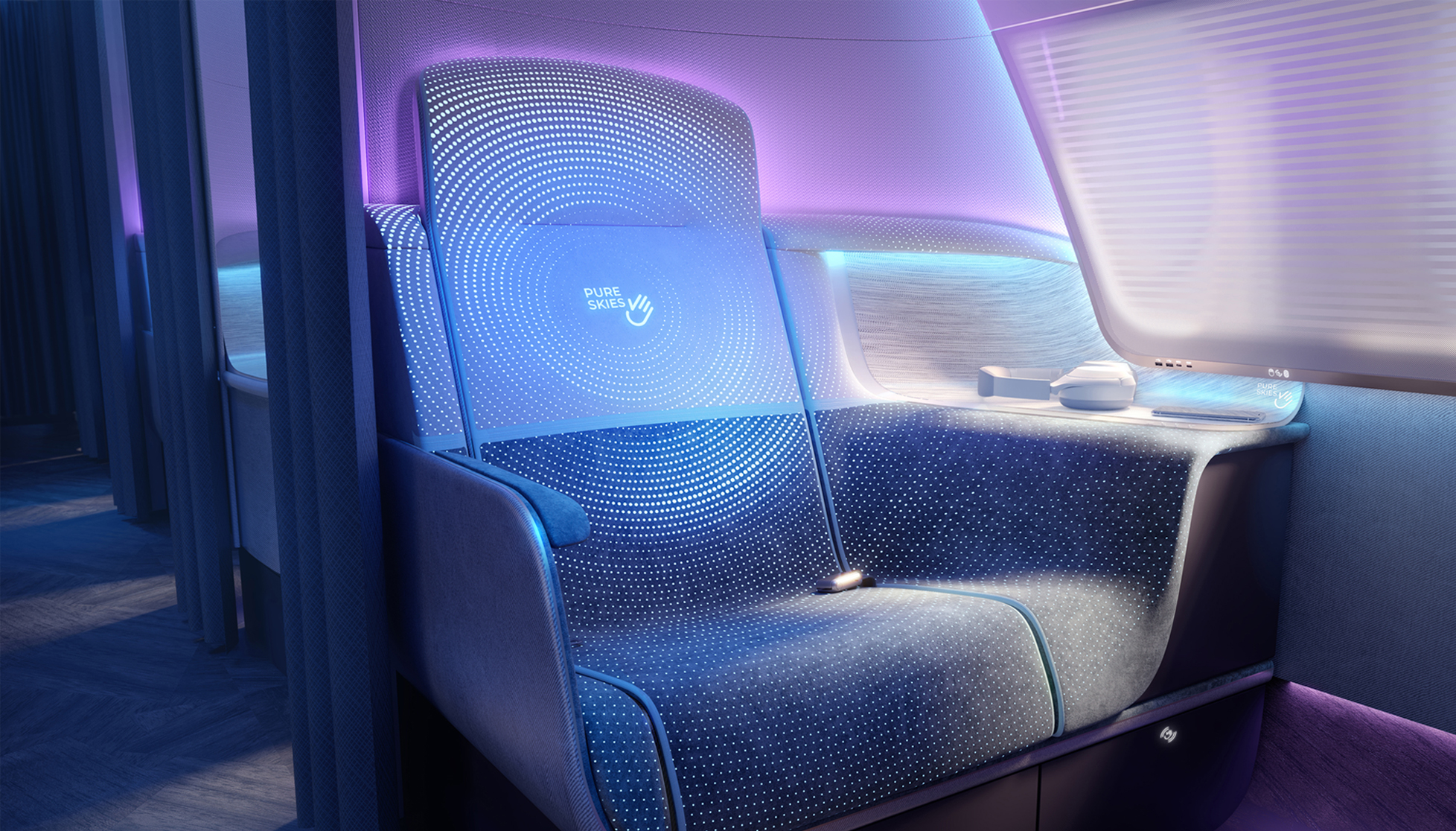Airlines have been quick to promote the fact that air quality on a commercial airliner is actually quite high, with the air volume in the cabin being completely refreshed every two to four minutes. Any recycled air is sent through HEPA (high-efficiency particulate air) filters, similar to those used in hospitals, before being mixed with fresh outside air and entering the cabin again.
New cleaning protocols and safety regimes have been introduced to keep us safe and encourage us to fly. Requirements for all passengers and crewmembers to wear face coverings, which are designed to contain respiratory droplets before they can be expelled into the air, makes a big difference too.
But any form of true social distancing on an aircraft is impossible, and while it has been proven that leaving middle seats unsold and creating a bit more space between passengers can reduce the risk of spread, there will always me some moderate risk of infection, just like visiting the shops or joining friends and family at a restaurant or bar. That is where the safety of an updated business class offering would certainly appeal to a corporate traveller.
The seats of an aircraft have not yet been changed and so can offer many locations for any virus to lurk undetected. There are plenty of touch points that need to be cleaned after every flight to eradicate any droplets. These include the safety card, drop down table, seat belt, any IFE controls and arm rests. A number of airlines have introduced UVC cleaning which goes a long way, but can never be foolproof.
Business and premium classes have always offered more space with bigger seats, but the same touch points exist and so still harbour the same potential dangers for virus transmission. Recent trends have already seen the introduction of privacy screens and even doors to define premium class space.
You may have experienced Etihad's 'Residency' premium seating which many thought slightly over the top but in these days of wanting to be safe it probably represents the start of a whole new way to fly for the elite and business passenger.

Design consultancy PriestmanGoode have come up with a new seat design concept that changes the entire look and feel of both economy and premium cabins. Using the latest technology and material innovation their designs are aimed at reducing passenger anxiety, improve personal space and hygiene and facilitate a touch-free journey.
Firstly they have done away with the old fashioned concept of 'class' and created Pure Skies Rooms for business and Pure Skies Zones for economy. The economy seats include dividing screens every other row and a staggered seat configuration to give the feeling of more personal space.

The seats have been redesigned with a back seat shell that has no gaps to eliminate locations for dirt to hide. The recline mechanism is entirely contained within the fabric skin of the seat to avoid split lines and hard to clean gaps. IFE screens have been removed in favour of passengers using their own devices, although offering an additional commercial opportunity with IFE screens available to hire.
The literature pocket has been replaced with an optional removable bag for each passenger or the option to clip on their own bag. The safety card is integrated into the back shell to show the relevant information when required.
The business seat, or 'Room' is a fully enclosed personal space with full height curtains. The seat has been designed with minimum split lines and seam-welded fabrics and an antimicrobial material and finish. There is personal lighting and temperature control and an IFE system that fully synchronises with the passenger's own device.

The seat is a modular design that provides personal overhead stowage, containing bedding and a personal wardrobe. Seat fabrics include photochromic and thermochromic inks that react to new cleaning methods like UVC and heat cleaning, to display a message of reassurance to passengers when boarding.
PriestmanGoode are well known in the aviation business and have already designed aircraft interiors for Qatar Airways, United Airlines, WestJet, Hainan Airlines, LATAM Airlines, S7 Airlines, Juneyao Air, South African Airways, El Al and many more. These new designs not only incorporate the need for hygiene and touch-free travel but also have included sustainable solutions because a number of state aid packages have made this a requirement going forward.
This offering is certainly just one of a number of new concepts being developed by interior designers to help the airlines to keep the cabins clean and help to keep us safe while we travel. It's not known how quickly these will come online but what is clear is that the threat of another pandemic will never be that far away so whatever airlines can do to prepare for that eventuality is a step in the right direction.